
April 17, 2022 | Report
See Part 1: US Consumers Want Business to Do More on Sustainability
US consumers are most likely to think about the environment when it comes to sustainability, but the association isn’t necessarily what drives their purchases of sustainable products, our latest research shows. When it comes to buying, consumers are most attracted to brands that they connect to fair prices, fair working conditions, and fair wages, in addition to those with environmental benefits like conservation of natural resources.
The distinction carries implications for marketing sustainable products. Being fair can be a real marketing asset. Yet challenges remain. Sustainability features continue to trail basic purchasing criteria such as product performance, quality, price, and convenient access, even as consumers increasingly value sustainable products and services. This is what the Hierarchy of Consumer Needs from our prior research illustrates.1 The premium price of sustainable products is a particular barrier for consumers2—a challenge for companies as they try to recover the cost of their sustainability initiatives.
How can marketers better position sustainable products and services? Focusing more on “fair” attributes and communicating them better, targeting more receptive customer segments, and using non-traditional pricing and payment models are ways to generate a positive response from consumers and to yield returns from investments in corporate sustainability.
These findings are based on a survey of 1,923 US adults from September 3-5, 2021. Part 1 of our research explores US consumer perceptions of the impacts of industry sectors and policymakers on sustainability.
While equity, climate, and brands’ social stance have been prominent topics, corporate action on these issues has relatively little impact on brand choice when compared to, for example, fair prices, fair labor conditions and wages, and conservation of natural resources. Marketing strategies with reputational objectives and brand building can indirectly impact a brand’s value and financial health.
Tell your customers about your workforce initiatives
While equity, climate, and brands’ social stance have been prominent topics, corporate action on these issues has relatively little impact on brand choice when compared to, for example, fair prices, fair labor conditions and wages, and conservation of natural resources. Marketing strategies with reputational objectives and brand building can indirectly impact a brand’s value and financial health.
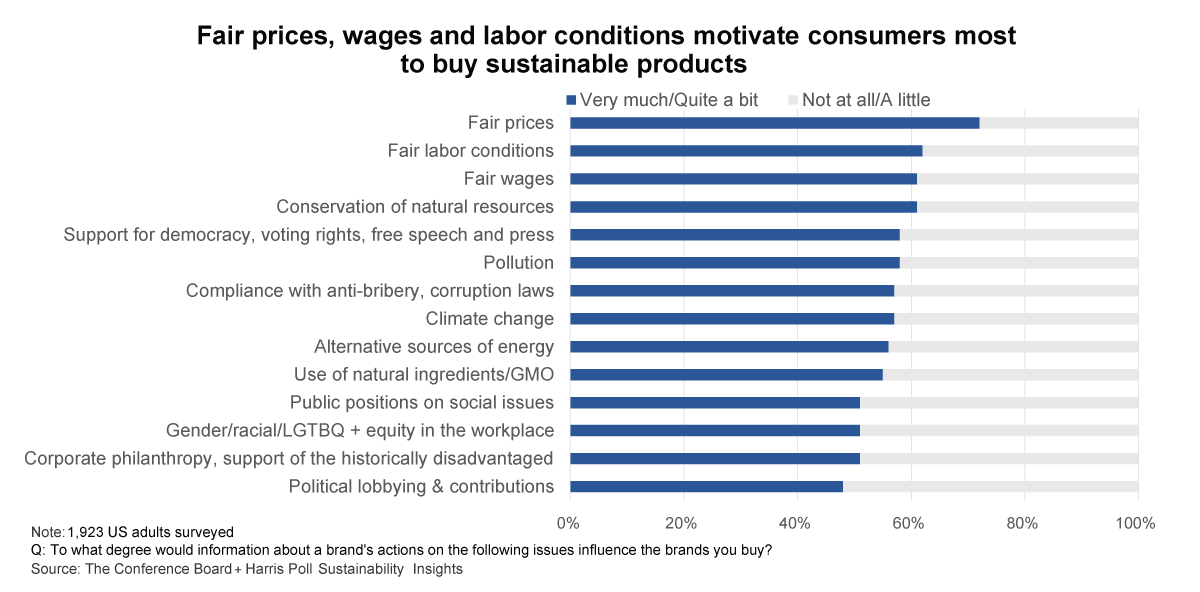
There can be wide variation across consumer demographics on the sustainability features that influence purchasing. Divisions widen the most on climate change and on gender/racial/LGTBQ+ equity issues in the workplace. Conversely, the gap is most narrow on fair pricing−this is an important purchasing influence across consumer segments.
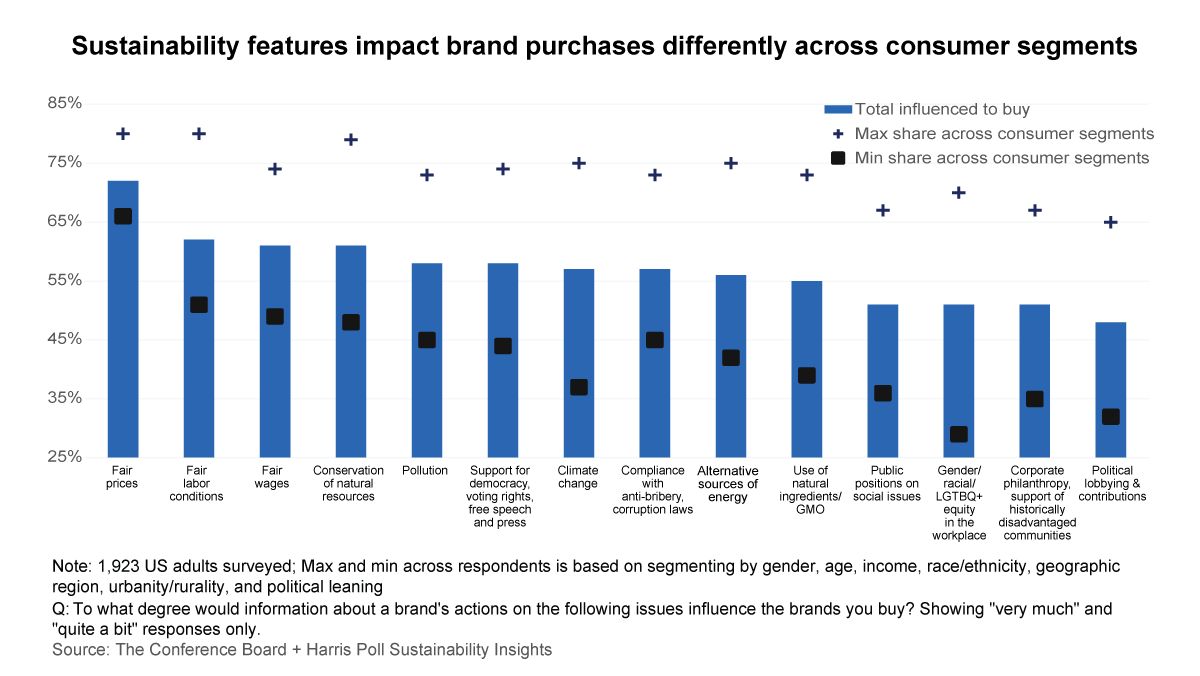
If you market to a diverse customer base, especially where there are differences in political attitudes, residential settings or age, our research shows that interest in purchasing sustainable brands will vary widely among these groups. Conversely, purchasing interest by gender or income are less likely to see as much distinction.
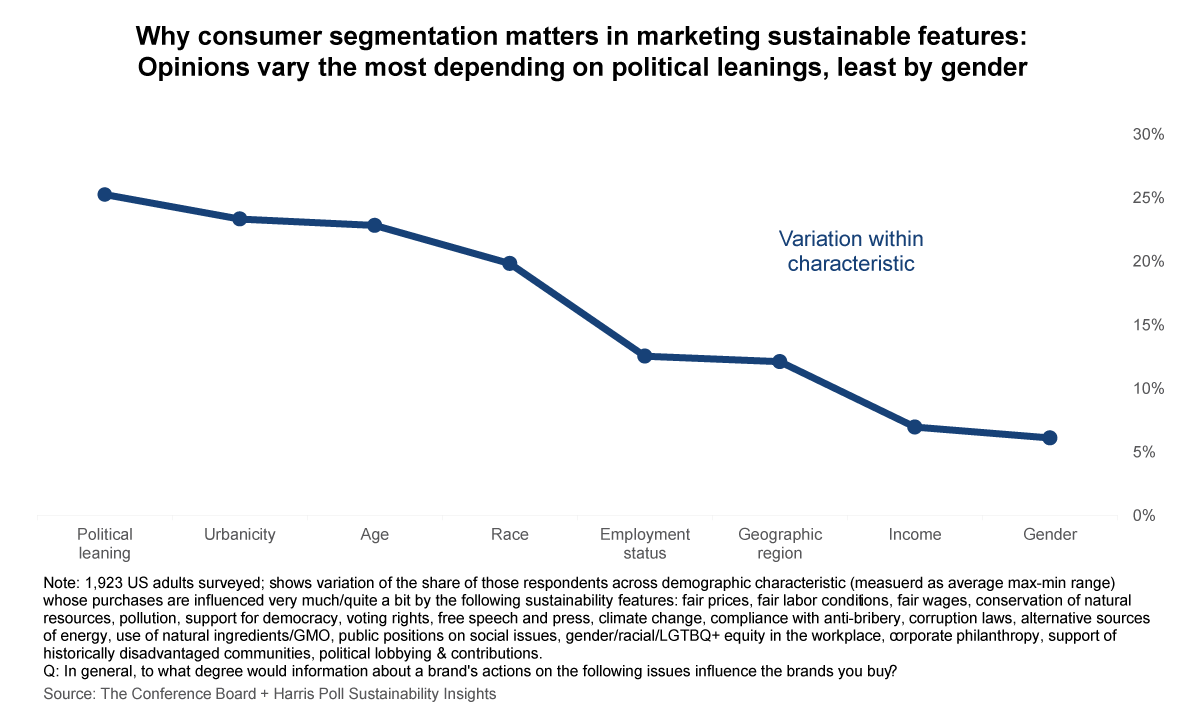
There can be substantial disagreement across consumer segments as to how much corporate climate efforts sway their purchases. Gen Z and urban consumers are the most receptive to brands with climate initiatives. For now, companies may be best off highlighting their climate initiatives—and differentiating themselves—to those most receptive segments.
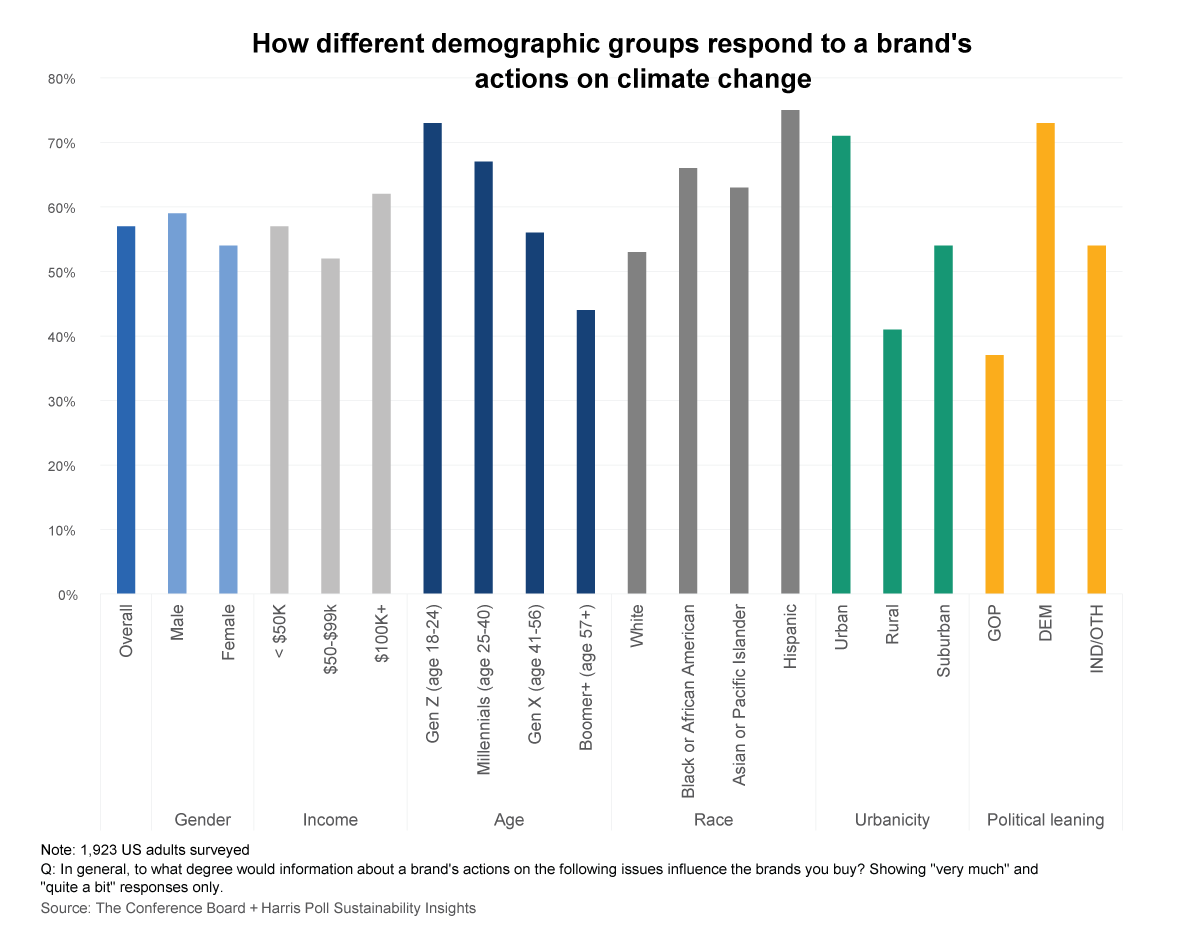
Consumers have a range of associations with sustainable products. Given this, specific labels for individual sustainability initiatives may be more effective. Environmental concerns are—and may continue to be—people’s top association.
The increase in extreme weather events and their impact on people and businesses, as well as the prominence of climate topics in public discussion, may further foster ecological concerns going forward.
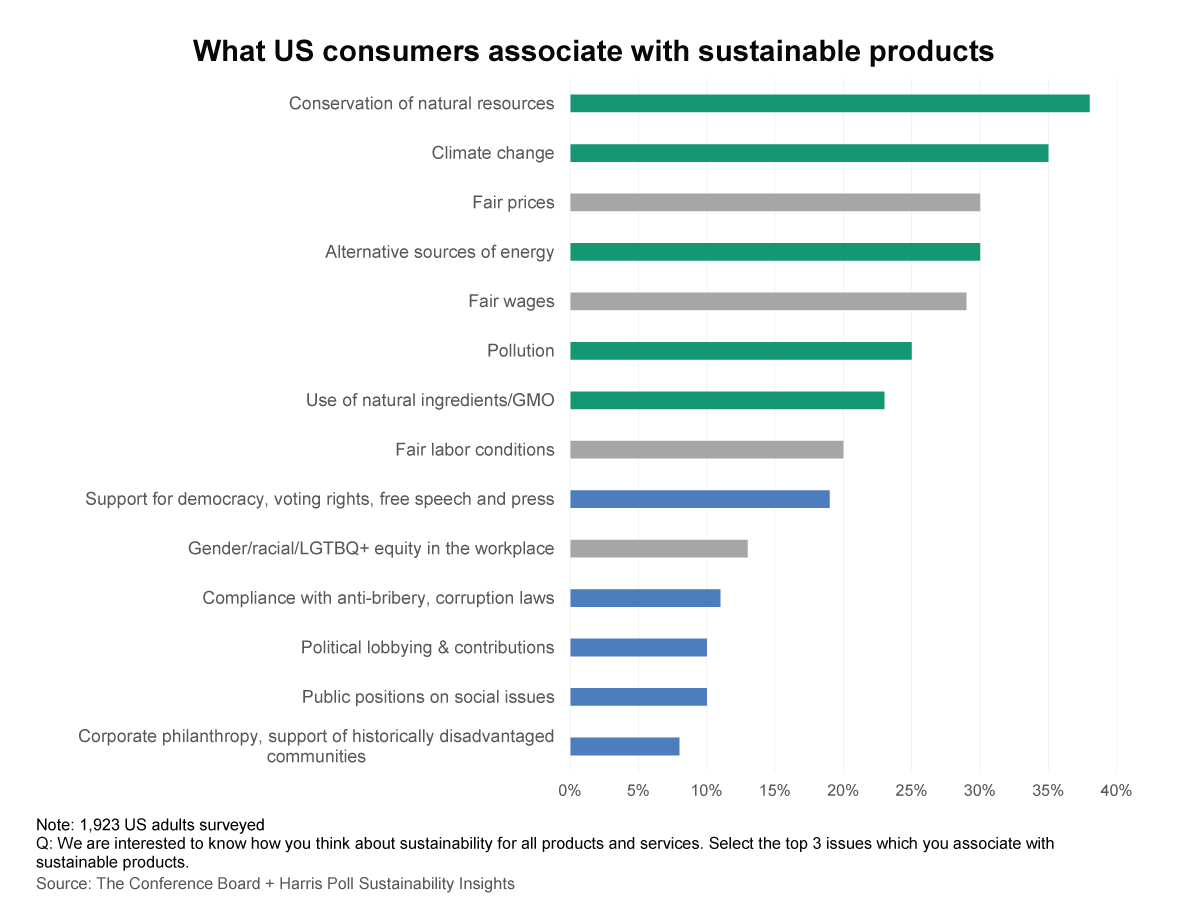
Consumers increasingly think of corporate sustainability as being all-around corporate citizenship. This marks a change from two years ago when consumers thought of sustainable products and services primarily as being environmentally friendly.
Consumers now associate sustainable products increasingly with “being fair” as well as being related to environmental actions. This understanding of sustainability encompassing social dimensions could turn current sustainability-related differentiators into new expected standards. Strategy and innovation teams may want to collaborate closely with sustainability and marketing teams to find new differentiators.
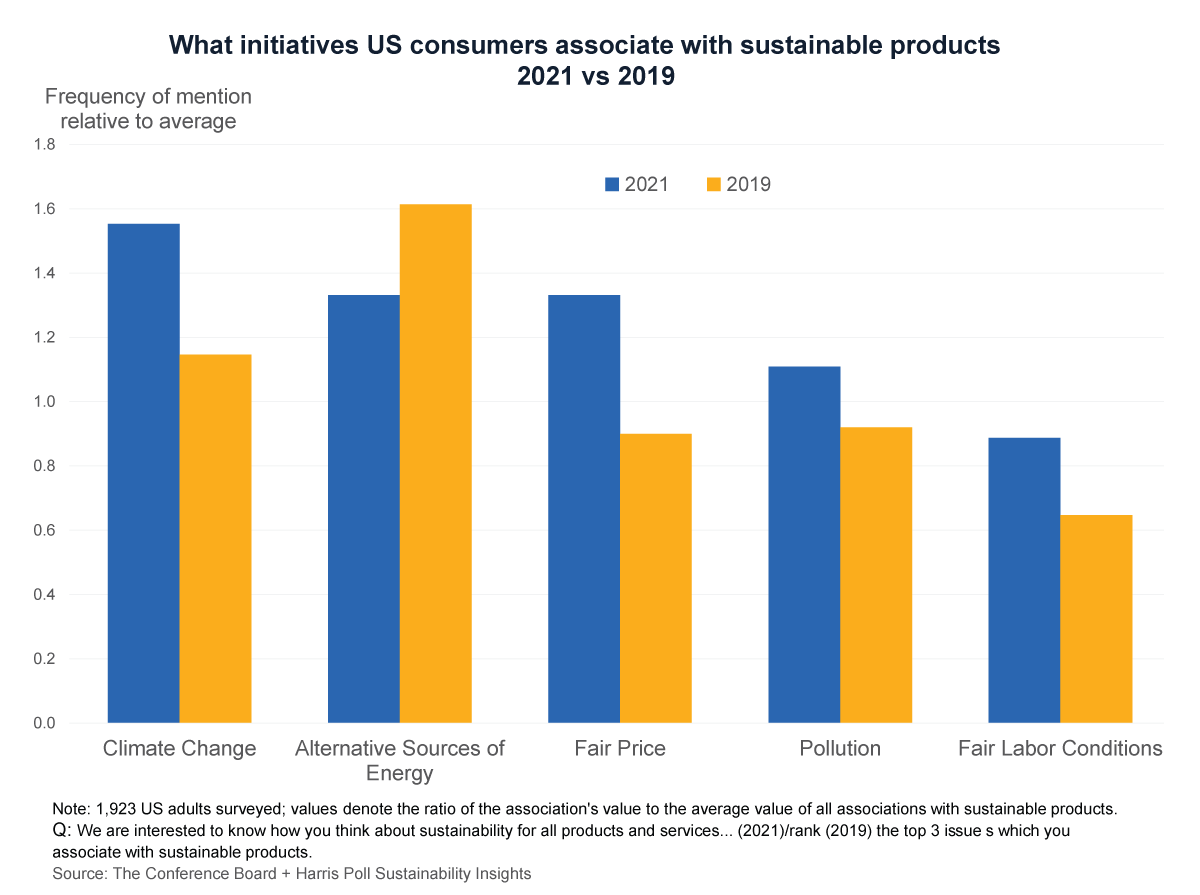
This report is the second of two reports from our survey of US consumer perceptions around corporate sustainability. In the first report, we explore people’s perceptions of certain industry sectors and policy makers regarding their positive impact on sustainability and change needed for each of them to become sustainable.
The survey is a collaboration between The Conference Board and The Harris Poll. It ran in the US from September 3-5, 2021, and yielded responses from 1,923 adults. Results are weighted to represent the US adult population.
We greatly appreciate the ongoing collaboration with Rob Jekielek, Managing Director at The Harris Poll, who made this research possible.
[1] Denise Dahlhoff, How Sustainability Features Influence Consumers' Choices, The Conference Board, 2022, pp. 23-24 and 17.
[2] See Dahlhoff, How Sustainability Features Influence Consumers' Choices, pp. 8, 10, and 18 in particular.
January 29, 2024 | Article
January 26, 2024 | Article
